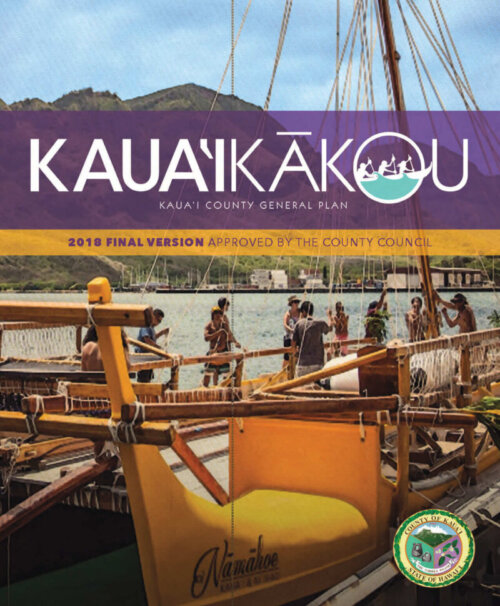Reflecting back, we’ve compiled a history of our work in Hawai’i and the impact it has had on current residents and communities, primarily on the island of Kaua’i. Each unique project was implemented with visualizations to show what change looks like in the community, community engaged planning, as well as feasible, incremental, context-sensitive solutions for island climate and geography.
"Opticos has been very helpful in working with us to clarify and define what Smart Growth means to the island of Kaua’i. They have been able to clearly translate the 'generic' Smart Growth ideas into creative, culturally specific ideas and approaches to guide our future planning and coding projects.”
— Mike Dahilig, Director (Former), Kaua'i County Department of Planning
Maui Missing Middle Housing Scan + Deep Dive™ (2024-Present)
Opticos is working with the Hawai’i Community Foundation and the Maui County Planning Department to identify regulatory and policy barriers to the development of context-sensitive Missing Middle Housing in existing Maui neighborhoods. Through analysis of current regulations and development patterns, stakeholder engagement, and scenario testing on lots in Maui communities, Opticos will deliver recommendations to support the development of more housing options for Maui residents.
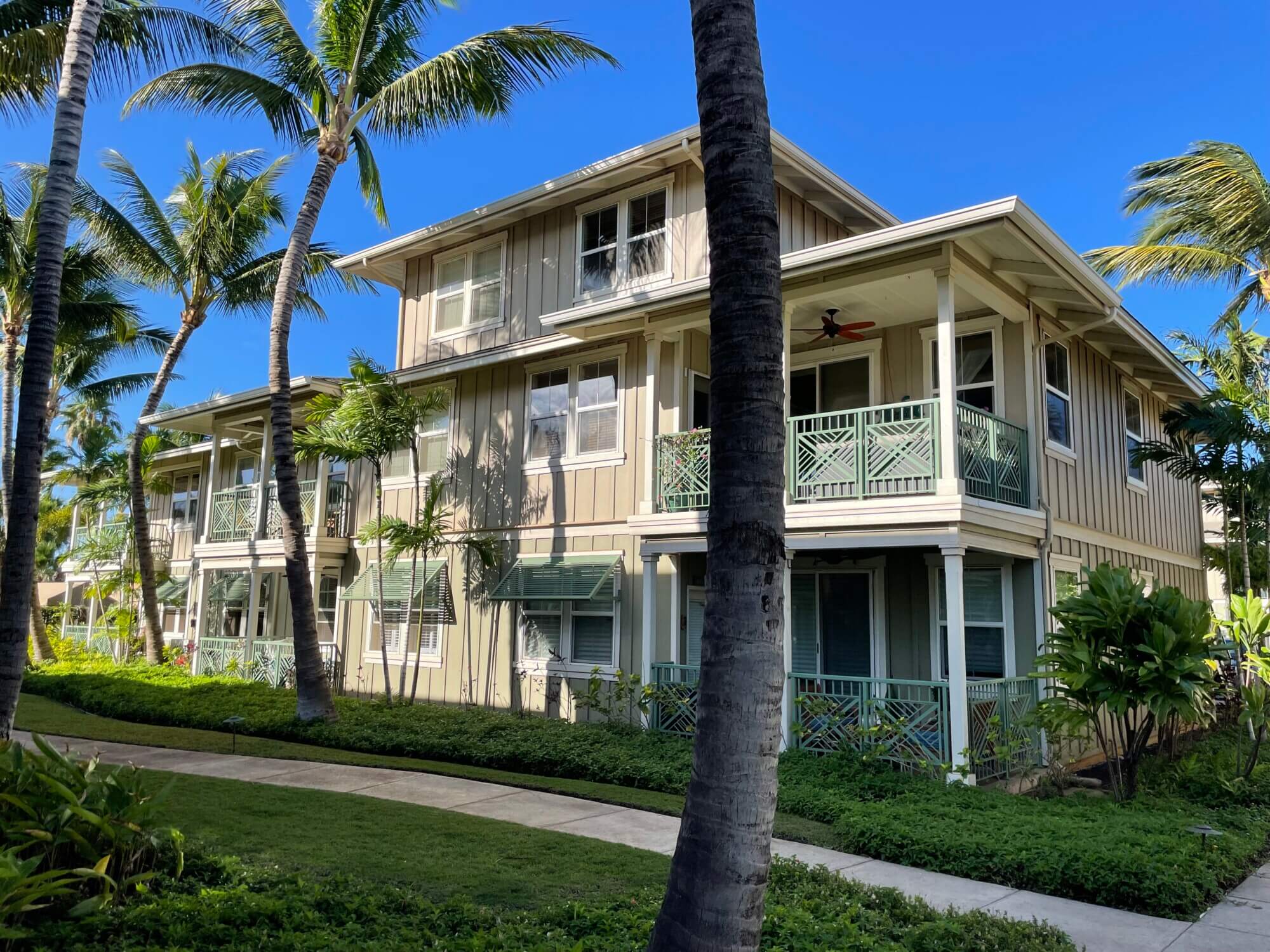
Lihu'e Civic Center Redevelopment Feasibility Plan (2023-2024)
To help build community consensus and guide regulatory changes to support workforce infill housing development on county-owned land at the Līhuʻe Civic Center, Opticos hosted a community workshop and developed feasibility studies to determine development capacity. For the workshop, Opticos created a community design exercise using 3D printed model pieces to show how different building types could fit on the site.
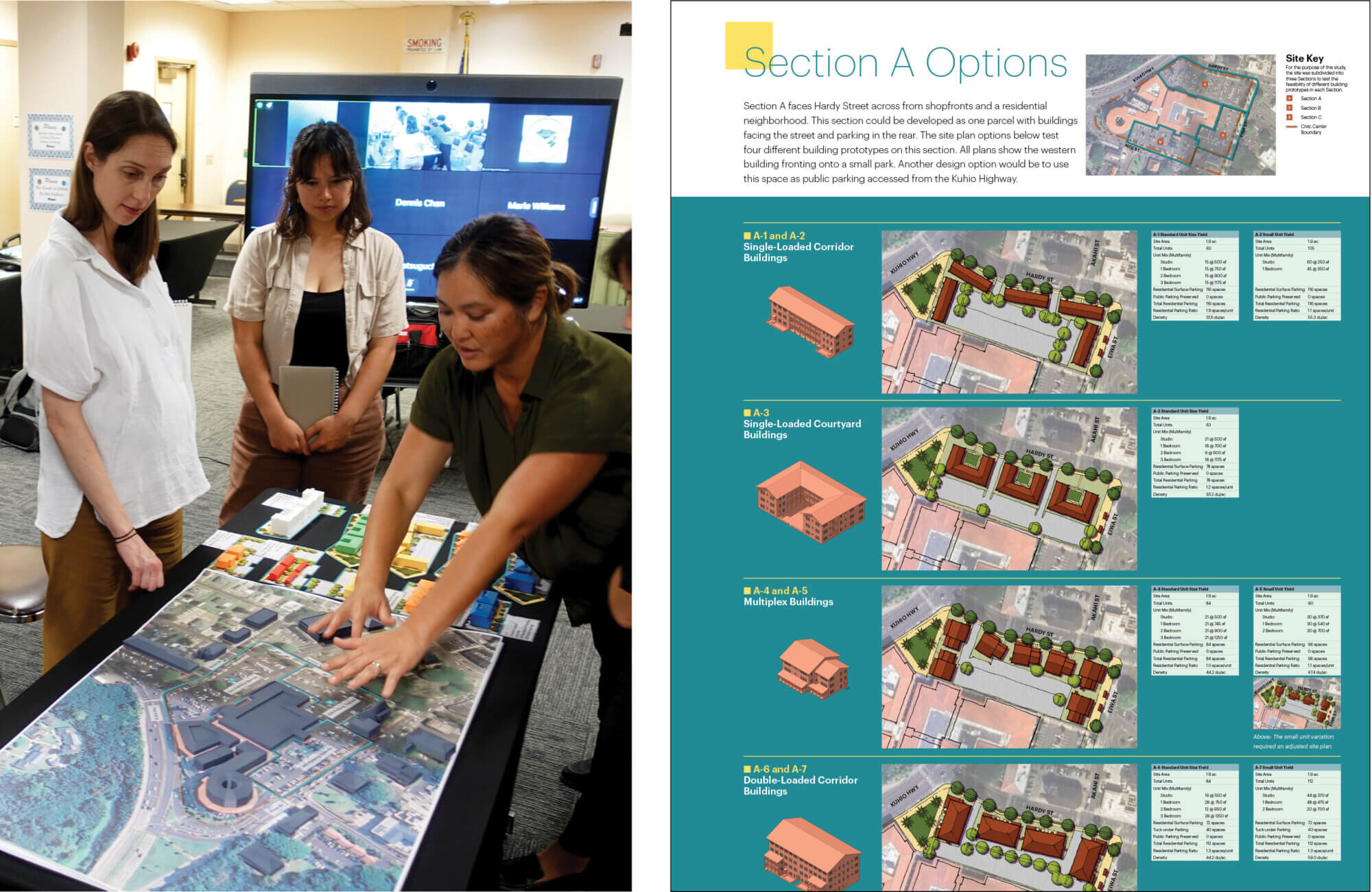
Wailani Lot Neighborhood Concept + Site Design (2022)
Kaua’i Habitat for Humanity was looking for innovative solutions to a site that is in a prime location in Līhu’e. Habitat for Humanity hired Opticos Design to deliver creative solutions for a neighborhood that was in need of a vision beyond the conventional ways of designing a site plan aiming to achieve maximum unit yield. Opticos designed a plan that not only exceeded the target unit count, but also provided a series of connected, pedestrian-oriented greens throughout the site to foster community and provide ample green space.
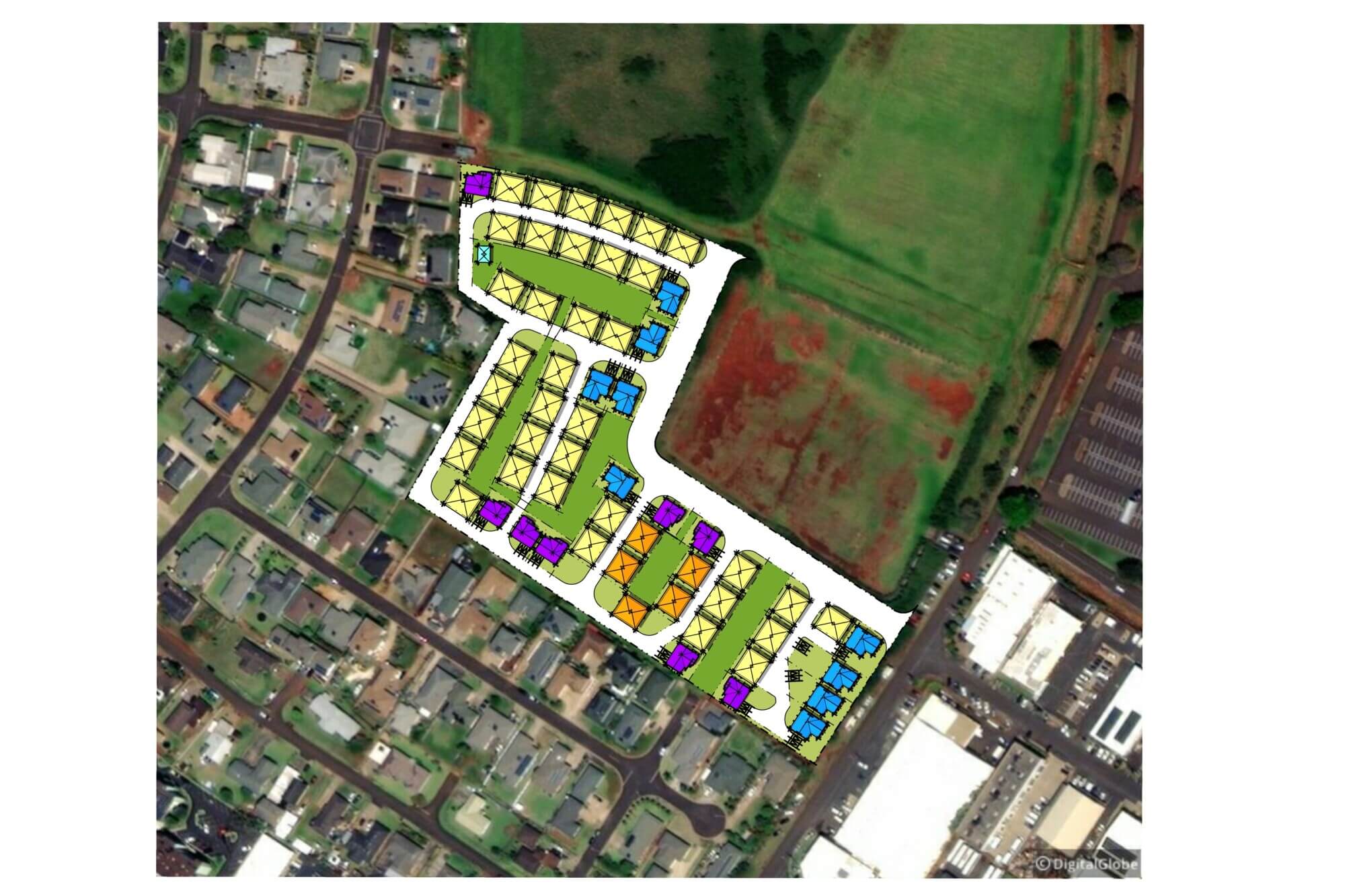
Plantation Camps FBC Strategic Advising + Support (2020-2021)
Opticos provided strategic advising and support for Kaua’i County staff who drafted a form-based code for historic plantation camps on the island’s west side. The form-based code supports preservation of the historic camps while also allowing limited infill development and housing expansion. The code guides development so that the plantation camps remain compact and walkable with well-defined borders and small cottages, surrounded by working agricultural fields and activity.
APA Hawai’i Outstanding Planning, Honorable Mention 2023
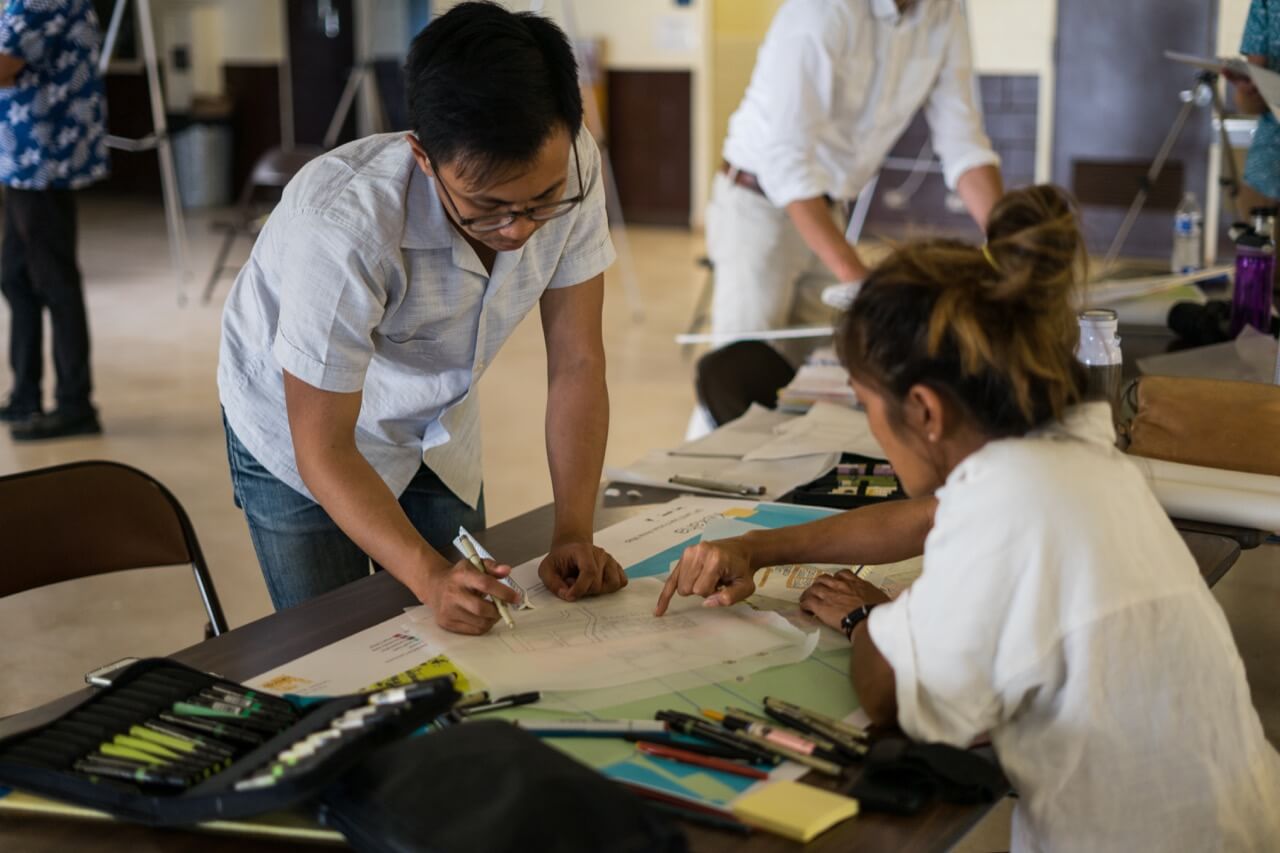
West Kaua'i Community Plan + FBC (2018-2020)
This flexible form-based code for three communities in West Kauaʻi implements the vision created during a series of community charrettes facilitated by Opticos in 2018. The code encourages cost-effective infill development by using historic patterns in the island’s built form to inform standards for site design and building form. The code maintains the cherished character of these island communities while providing flexibility for residents to incrementally add more housing units.
Hawai’i APA Outstanding Planning Award 2021
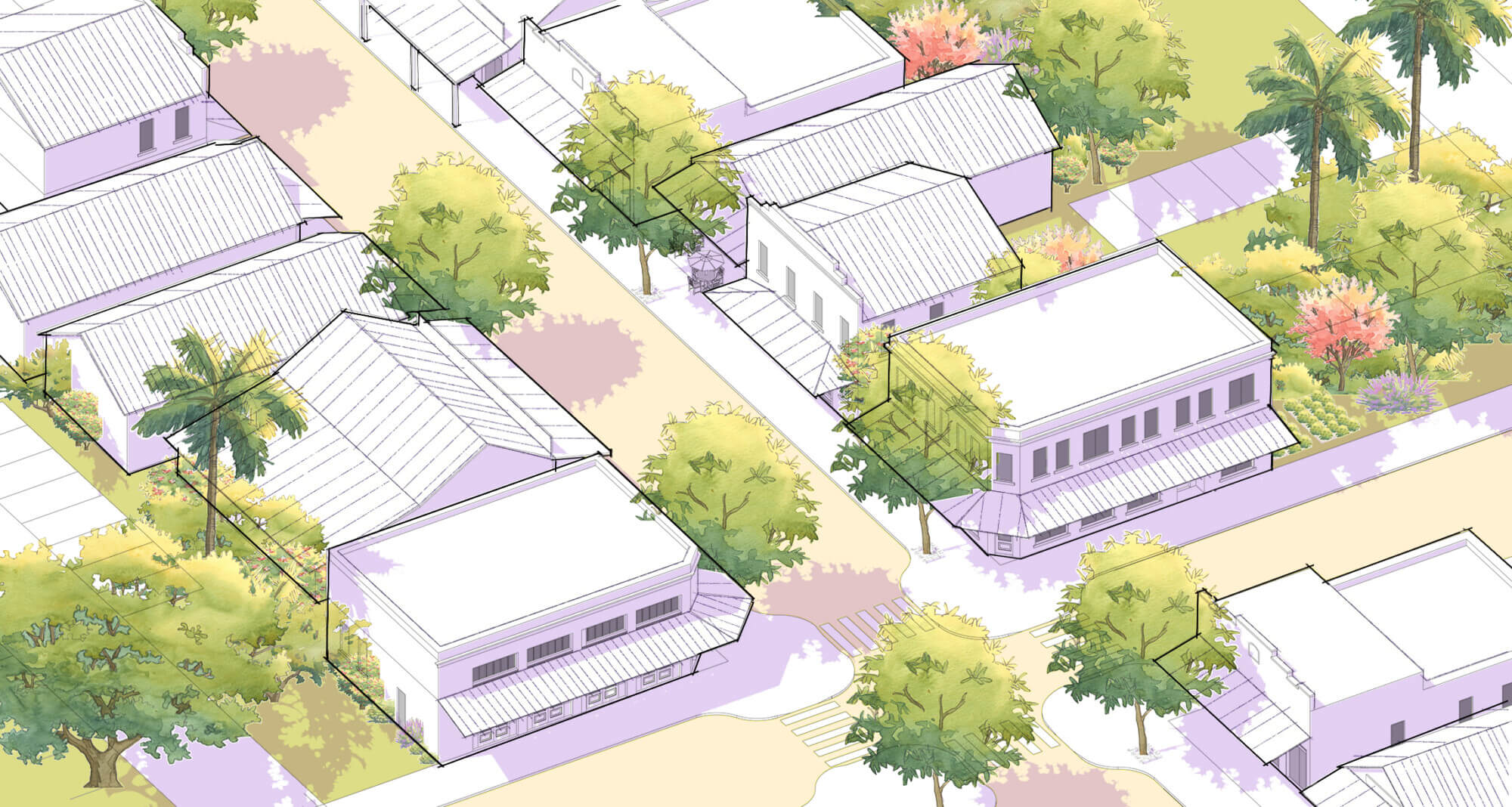
Primary Urban Center Development Plan Update (2022)
As part of a larger consultant team, Opticos developed a land use strategy for growth and change that includes a palette of place types that will help to streamline plan implementation by identifying where policies and implementation actions can be shared between different places, and where unique solutions will need to be found. The place types function as form based land use designations that provide a vision for the future of Honolulu. Opticos’ urban design expertise ensured that each place type captures the different conditions related to urban form and the physical character that define the unique communities and neighborhoods found throughout Honolulu.
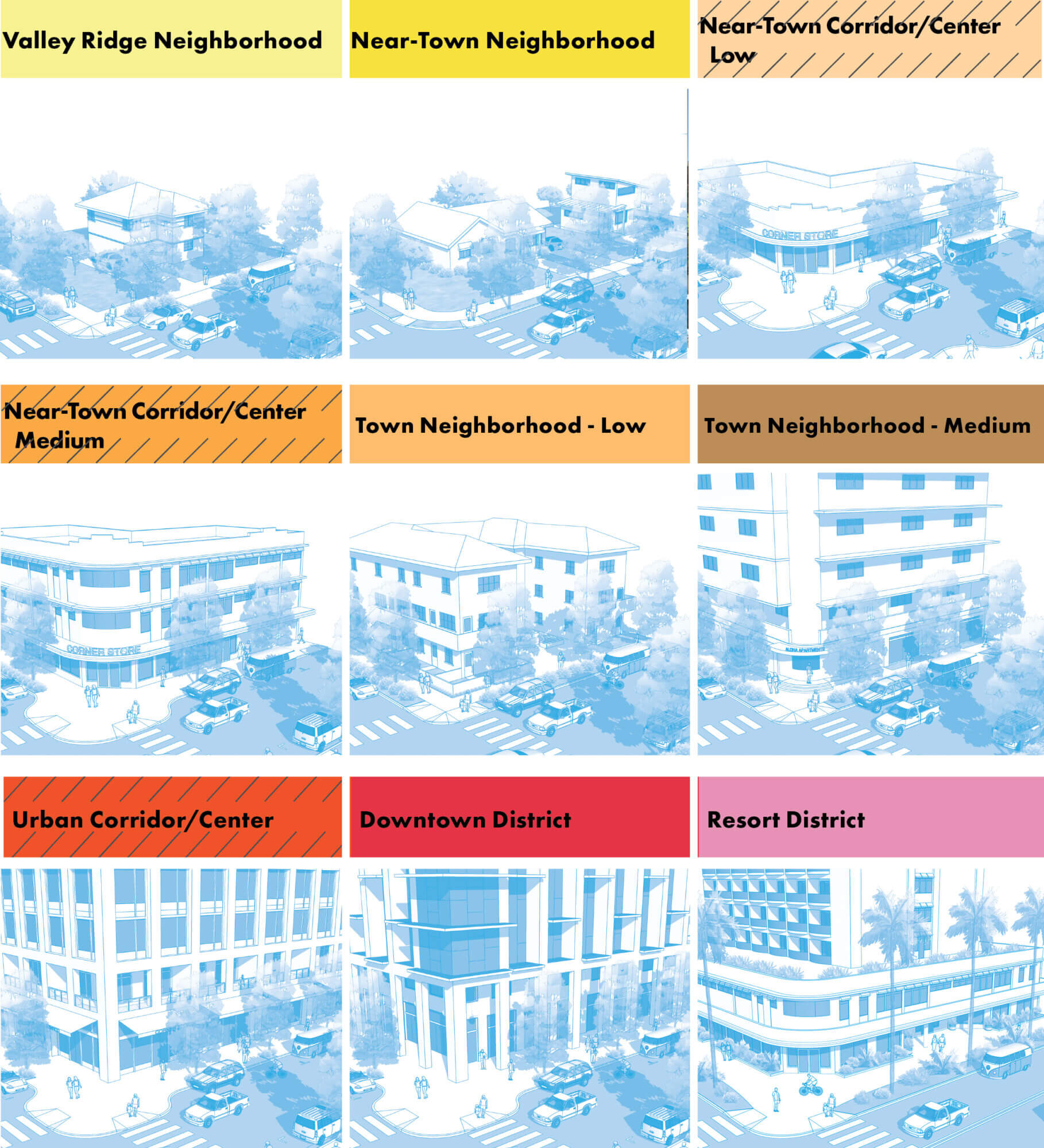
South Kaua’i Community Plan + FBC (2013-2014)
In coordination with its planning and regional-scale efforts, Opticos worked with the community in the South Kaua’i area to draft a Form-Based Code for the area. Concepts of preservation, evolution, and transformation guided the planning and coding efforts. Opticos worked with the community to identify ways to preserve agricultural character and cultural history, which led to zoning code changes that will intelligently allow communities to evolve with intention over the next twenty years.
APA Hawai’i Outstanding Planning Award 2015
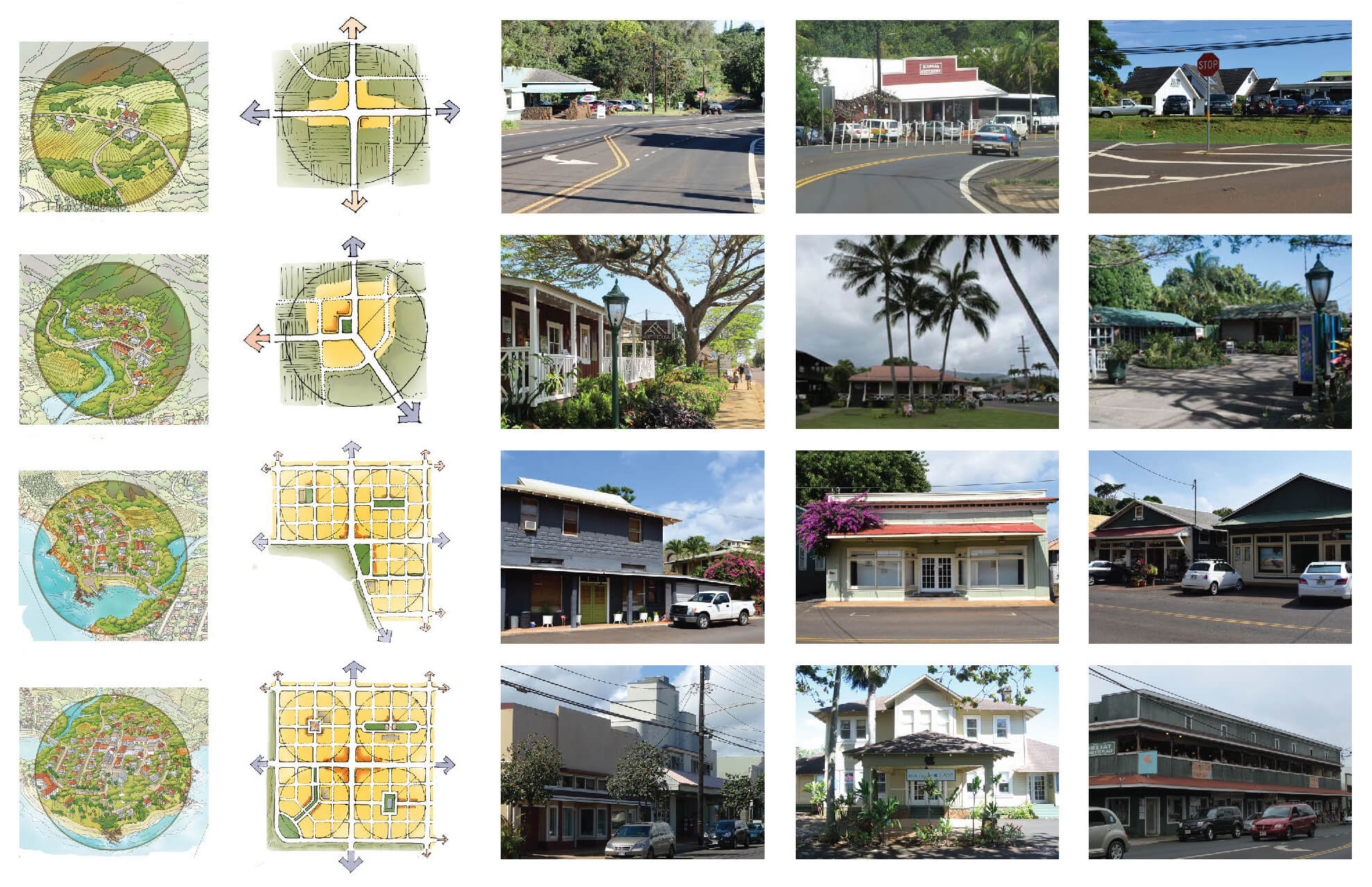
Kaua’i Kākao General Plan Place Types Strategy (2015-2016)
In collaboration with SSFM International, Opticos worked to integrate walkable community types into the General Plan land use framework. The Opticos team facilitated a series of multiday workshops on the West Side and North Shore of Kauaʻi that aim to understand individual communities’ desired “degree of change” with regards to various aspects of the built environment and ways in which the General Plan land use can guide this anticipated change. Place Types have been utilized to summarize size, intensity, and character and correlate land use designations with new, form-based zoning districts.
APA Hawai’i Outstanding Planning Award 2018
APA National Daniel Burnham Award 2019
